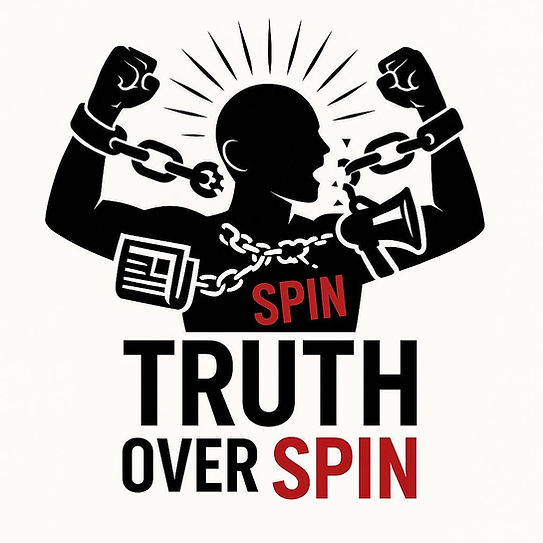Unveiling Media Manipulation: Anti-Propaganda Platform
- Mohamed Fahd
- Jul 22
- 4 min read
In today's world, information is everywhere. We scroll through social media, read news articles, and watch videos, all while trying to make sense of what is true and what is not. But how do we know if what we see is real? Media manipulation is a growing concern, and understanding it is crucial for anyone who consumes information.
This blog post will explore the concept of media manipulation, the role of propaganda, and how an anti-propaganda platform can help us navigate this complex landscape.
Understanding Media Manipulation
Media manipulation refers to the ways in which information is altered or presented to influence public perception. This can happen through various means, including selective reporting, sensationalism, and outright misinformation.
The Power of Media
Media has the power to shape opinions and beliefs. It can create narratives that influence how we view the world. For example, during elections, media coverage can sway public opinion about candidates.
Selective Reporting: This occurs when certain facts are highlighted while others are ignored. For instance, a news outlet may focus on a politician's scandal while downplaying their achievements.
Sensationalism: This involves exaggerating stories to attract attention. Headlines that read "Catastrophe Strikes!" may not reflect the actual events, but they grab clicks and views.
Misinformation: This is the spread of false information, whether intentional or not. Social media platforms are often breeding grounds for such content.
Understanding these tactics is the first step in recognizing media manipulation.
The Role of Propaganda
Propaganda is a specific type of media manipulation aimed at promoting a particular agenda. It often uses emotional appeals and persuasive techniques to influence public opinion.
Historical Context
Throughout history, propaganda has been used in various forms. During World War II, governments used posters and films to rally support for the war effort. Today, propaganda can be found in political campaigns, advertising, and even social media.
Techniques of Propaganda
Some common techniques include:
Bandwagon: This suggests that everyone is doing something, so you should too. For example, "Join the millions who support this cause!"
Fear: This plays on people's fears to persuade them. An ad might say, "If you don't act now, you could lose everything!"
Testimonials: This involves using endorsements from celebrities or experts to lend credibility to a message.
Recognizing these techniques can help individuals become more critical consumers of information.
The Need for an Anti-Propaganda Platform
With the rise of media manipulation and propaganda, there is a growing need for tools that help people discern fact from fiction. An anti-propaganda platform can serve as a valuable resource.
What is an Anti-Propaganda Platform?
An anti-propaganda platform is a tool or service designed to help users identify and combat misinformation. It can provide fact-checking services, educational resources, and community support.
Features of an Effective Platform
Fact-Checking: The platform should offer reliable fact-checking services to verify claims made in the media.
Educational Resources: Users should have access to articles, videos, and tutorials that explain media literacy and critical thinking skills.
Community Engagement: A forum or discussion board can allow users to share experiences and strategies for identifying misinformation.
User-Friendly Interface: The platform should be easy to navigate, making it accessible to all users, regardless of their tech skills.
By providing these features, an anti-propaganda platform can empower individuals to take control of their media consumption.
Practical Steps to Combat Media Manipulation
While an anti-propaganda platform can be a helpful resource, there are also practical steps individuals can take to combat media manipulation in their daily lives.
1. Verify Sources
Before sharing information, take a moment to verify the source. Check if the outlet is reputable and if the information is backed by credible evidence.
2. Cross-Check Information
Look for multiple sources that report the same story. If only one outlet is covering a particular event, it may be worth investigating further.
3. Be Skeptical of Sensational Headlines
If a headline seems too outrageous to be true, it probably is. Approach sensational headlines with caution and seek out the full story.
4. Educate Yourself
Take the time to learn about media literacy. Understanding how media works can help you become a more informed consumer.
5. Engage in Discussions
Talk to friends and family about media manipulation. Sharing knowledge can help create a more informed community.
By taking these steps, individuals can become more resilient against media manipulation.
The Future of Media Consumption
As technology continues to evolve, so too will the methods of media manipulation. However, by fostering critical thinking and media literacy, we can create a more informed society.
The Role of Technology
Emerging technologies, such as artificial intelligence, are changing the landscape of media. While they can enhance our experience, they also pose new challenges.
Deepfakes: These are realistic-looking videos that can be manipulated to show people saying or doing things they never did.
Algorithmic Bias: Social media algorithms can create echo chambers, where users only see information that aligns with their beliefs.
Embracing Change
To navigate this evolving landscape, we must embrace change. This means staying informed about new technologies and their implications for media consumption.
Building a Culture of Media Literacy
Creating a culture of media literacy is essential for combating media manipulation. This involves education at all levels, from schools to community organizations.
Educational Initiatives
Schools can incorporate media literacy into their curricula, teaching students how to critically evaluate information.
Community Workshops
Local organizations can host workshops to educate the public about media manipulation and how to identify it.
Collaboration with Tech Companies
Tech companies can play a role by promoting transparency and accountability in their platforms.
By working together, we can build a society that values truth and critical thinking.
Final Thoughts
Media manipulation is a pressing issue that affects us all. By understanding its tactics and recognizing the role of propaganda, we can become more informed consumers of information.
An anti-propaganda platform can serve as a valuable resource in this journey, providing tools and support to help individuals navigate the complex media landscape.
As we move forward, let us commit to fostering a culture of media literacy and critical thinking. Together, we can combat misinformation and create a more informed society.







Comments